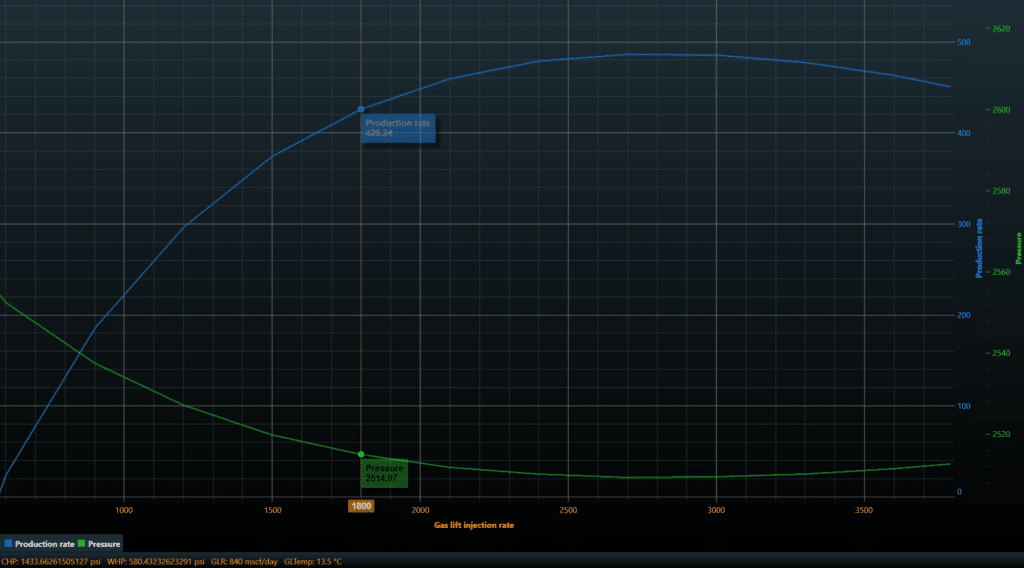Full Field Nodal Analysis & Gas network optimisation
Process & Production Optimisation
ScanWell leverages field data to calibrate well models, enabling precise calculation of gas lift performance curves and vertical lift. These calibrated models identify inefficiencies across well clusters, empowering operators to take immediate corrective actions.
Gas lift performance
The use of nodal analysis to generate the gaslift performance curve of a single well, based on actual pressure and temperature surveys along with a suitable multiphase flow correlation, is well established in the industry. The optimum GLIR is often simply set to that furnishing the highest production rate on the gas-lift performance curve.

To be able to accurately calibrate this function, a multi-rate test is required. Where a well producing with different gaslift rates while production data is recorded under each rate. This data can be further compared with empirical models troubleshooting inflow and vertical lift equations.
The multi-rate test approach allows to understand the liquid production rate as a function of allocated gaslift independently of inflow and vertical lift characteristics. When operational limitations do not allow to optimize inflow or to improve vertical lift, accurate GLPC simulation will provide information regarding optimum GLIR under current well condition, including sub-optimal operating point.
GLPCs are often used to accommodate economic factors by including the net gain (or profit) from oil and gas production, and the costs associated with gas compression, gas injection and water disposal, and so forth.
In an oilfield, the amount of lift gas available for daily use is often limited by facility conditions and well operations, resulting in variations. Moreover, compressor capacity and separator limits may be influenced by operational conditions and handling facilities during production. Inefficient allocation of lift gas can result in economic losses due to over-constrained or over-designed facilities. Therefore, achieving an optimal lift gas allocation is crucial to maximize oil production or profitability.
Process & Production Optimisation
Calibrated Well Model
- Accurate Models: Field data calibration ensures precise gas lift performance curves.
- Efficiency Gains: Identifies well cluster inefficiencies.
- Optimal GLIR: Multi-rate testing determines ideal gas lift rates under current conditions.
- Economic Focus: Allows to balance production profits with operational costs.
- Resource Optimization: Maximizes oil output with efficient gas lift allocation.

